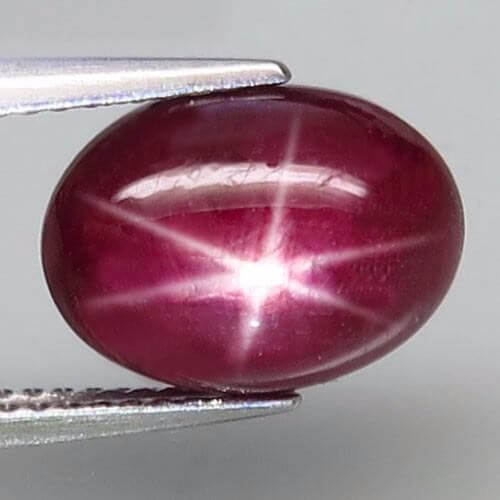
On the scale of Mohs rubies have a hardness of 9, as well as sapphires. Only diamonds and moissanites are harder. But don’t try to scratch them with a coin to check whether it’s genuine – you may damage your gemstone.
Original ruby gemstones are red. The reddish color of this gem is due to its composition of iron metals and chromium, its name comes from “ruber’’, which means ‘’red’’ in Latin. As well as sapphire it belongs to the family of corundum and red corundums are called rubies and sapphire goes for all other colors including pink.
DEPOSITS
The births are found in Burma, Sri Lanka, India, Madagascar, Thailand, Brazil, Colombia, China and Russia, and in smaller quantities can be found in South Africa, Australia, Greenland and the United States. Those of the peninsula of Malacca and Tanzania are very valuable, nearing the same size diamonds in value.
It is obtained in bauxitic mines by the leaching and flotation method. It can also be found in shallow rivers of the mesolithic zone. It is non-restrictively used in jewelery, in which its value depends on its color, size, density and purity. Besides, it has been widely used in the manufacture of mechanical watches to serve as a support for shafts or bushings that are subjected to rotation, since the ruby’s hardness resists wear by friction.
QUALITY
Like other gems of color, the price of the most valuable rubies is governed by their characteristics, such as color, transparency, size and quality of their size. The best color of the ruby is bright red called “pigeon blood”; the darker or purple tones are much cheaper qualities. The degree of purity plays a fundamental role in the ruby price formation: clean gemstones with good color reach exorbitant prices.
TREATMENT
Many rubies are treated thermally to improve their reddish color, so it is very difficult today to find a ruby that has not been treated. In these cases a ruby can reach up to 50% more of its value. Another very common treatment nowadays is the one that uses lead glass to fill the fissures allowing to achieve great transparency.
THE SYNTHETIC RUBY
Its synthetic production was firstly achiened by mixing alum and chromium pigments in 1923. In this way, gems very similar chemically and physically to the natural stones have been obtained.
There are three procedures used in the synthesis of corundums.
1) The method of molten substance (Melt). Fusion by heating its components, alumina and metal oxides as chromophores; crystallization occurs as the mixture cools.
2) The method of the molten solvent or flux. Dissolution of the corundum components in a low melting point material reacting with solvent.
3) The hydrothermal method. The corundum crystallizes from an aqueos solution, at high pressure and temperature, where the aluminium and chromophore elements are dissolved.
THE MOST FAMOUS RUBIES

RUBY MAUNG LIN
Burmese ruby was discovered during the reign of King Mindon Min. It is said to have weighed 400 carats and its color was almost perfect. It was divided into three parts and sent to England, Mandalay and Calcutta.
RUBY OF THE BLACK PRINCE
It is one of the most famous jewels of the crown of England, the crown that is transmitted from generation to generation and was renewed in the 21st century by Queen Victoria. This crown comprises the black prince as the main ruby, 11 emeralds, 16 sapphires, 277 pearls and no less than 2,780 diamonds.
RUBY ESTRELLA LONG
It has a weight of 100 carats, shown at the American Museum of History in New York.
THE CROWN OF SAN WENZEL BOHEMIO
It has a second-to-non ruby around 250 carats.
SUNRISE RUBY
A ring of Burmese ruby weighing 25.59 carats, auctioned by Sotheby’s in Geneva on May 12, 2015 for $ 32,420,000. It was sold to an anonymous buyer.
In our next article we will continue with more information on other true gift of the mineral world – Esmeralds


